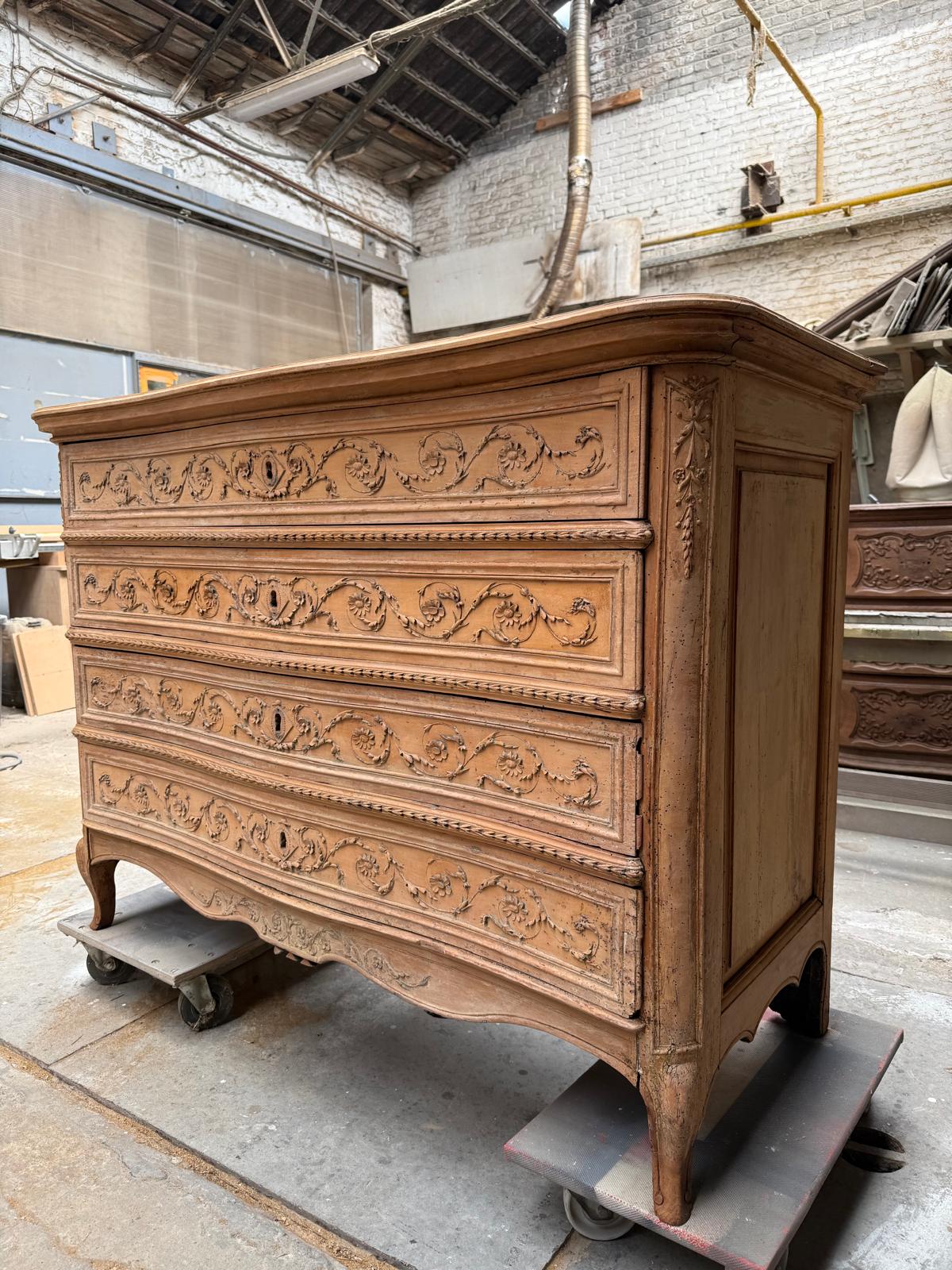Stripping old furniture
Thanks to gentle, precise, and contactless cleaning technology, this method allows for in-depth cleaning while preserving the authenticity and finesse of the crafted pieces.
Unlike abrasive or chemical techniques that can alter wood fibers or delicate details, laser cleaning works by targeted evaporation of surface layers without damaging the underlying material. It thus preserves the ornaments, moldings, sculptures, and assemblies typical of antique cabinetmaking, often crafted by hand with expert craftsmanship.
This approach allows you to truly restore your furniture's shine while preserving its patina, texture, and original character. Laser stripping is particularly recommended for partial restoration work, on fragile areas, or when you want to preserve as much material and detail as possible without damaging the integrity of the wood.
However, it’s important to note that this method does not produce clear, untreated wood. The laser beam acts on the surface layers but cannot completely remove pigments or residues deeply embedded in the fibers. If the goal is to restore a clear, natural wood finish, sandblasting will be necessary.
It should be noted, however, that laser stripping is particularly suitable for many types of wood and allows for precise, localized, and material-friendly treatment without generating dust or requiring chemicals. Each wood species has its own specific characteristics, and a preliminary assessment allows for the adjustments to be made for optimal results, depending on the condition, finish, and sensitivity of the substrate.
Do you have a project to restore antique furniture? Let’s discuss the best approach to respect your pieces and their history.
